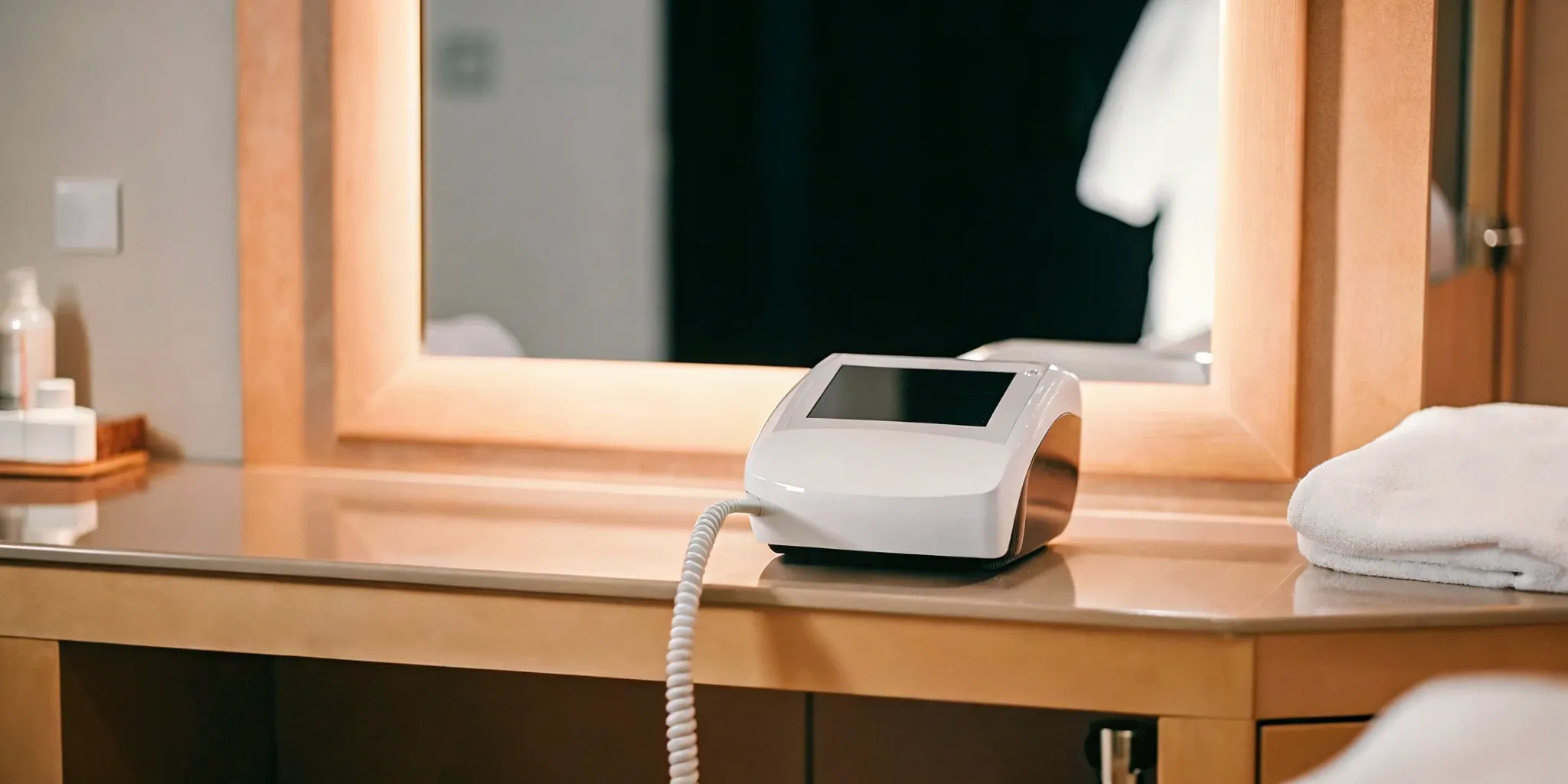Think about the time, money, and mental energy you spend on hair removal each year. The cost of razors, shaving cream, and waxing appointments adds up, and the time commitment is constant. Laser hair removal is different; it’s an investment in your future self. It’s about reclaiming your time and feeling confident in your skin at a moment’s notice. But like any smart investment, you need to understand the return. You want to know, how effective is laser hair removal at truly freeing you from that daily or weekly routine? Here, we’ll discuss the long-term value, the convenience it brings, and what makes it a worthwhile choice for so many people.
Key Takeaways
- Targets the Follicle for Lasting Reduction: Unlike shaving or waxing, laser treatments use focused light to damage the hair follicle itself. This leads to a significant, long-term reduction in hair growth, not just temporary removal from the surface.
- Multiple Sessions Are Non-Negotiable: Your hair grows in cycles, and the laser is only effective during the active growth phase. This is why a series of six to eight treatments is necessary to target every follicle and achieve the smoothest, most comprehensive results.
- Results Depend on You and Your Technician: Your personal biology—like hair color, skin tone, and hormones—sets the stage for your outcome. However, the most critical factor for safety and success is choosing a skilled professional who uses the right technology for your specific needs.
How Does Laser Hair Removal Actually Work?
It might sound like something out of a sci-fi movie, but the technology behind laser hair removal is actually pretty straightforward. It’s a medical procedure that uses a highly focused beam of light to get rid of unwanted hair. Instead of just cutting the hair at the surface like shaving, or pulling it out from the root like waxing, this method goes deeper to address the source of hair growth. Let’s break down exactly how this popular treatment gives you that long-lasting smoothness.
The Science of Targeting Hair
The secret to laser hair removal lies in a pigment called melanin. Melanin is what gives your hair (and skin) its color. During a treatment, a specialized laser sends out a concentrated beam of light that is absorbed by the dark pigment in your hair. This light energy instantly converts to heat, traveling down the hair shaft to the follicle below the skin’s surface. This targeted heat is what damages the follicle, making it much harder for it to produce new hair. Over a series of treatments, this process significantly slows down hair growth for lasting results.
How the Laser Pinpoints Each Follicle
You might be wondering if all that heat is safe for your skin. The great thing about this technology is its incredible precision. The laser is specifically designed to seek out the contrast between your skin and the dark pigment in the hair follicle. It hones in on the follicle with remarkable accuracy, delivering heat exactly where it’s needed without affecting the surrounding tissue. This is why professional laser hair removal treatments are both safe and effective, targeting unwanted hair while leaving your skin untouched and smooth.
Is Laser Hair Removal Better Than Shaving or Waxing?
If you’re tired of the endless cycle of shaving, plucking, and waxing, you’ve probably wondered if there’s a better way. While traditional methods offer a quick fix, they’re a temporary solution to a recurring problem. Laser hair removal, on the other hand, is an investment in a long-term solution. It works differently by targeting the hair at its source, which leads to a very different outcome than just trimming it at the surface. Let’s break down how it compares when you look at the big picture.
A Look at Long-Term Results
The biggest difference between laser treatments and methods like shaving or waxing is the staying power. While it’s not always completely permanent for everyone, laser hair removal is designed for significant, long-term hair reduction. Most people need a series of about six to eight sessions to see the best results. After completing your treatments, you can expect to enjoy smooth skin for months or even years. According to the Mayo Clinic, many people experience a dramatic and lasting decrease in hair growth. If and when hair does eventually grow back, it’s typically much finer, lighter, and far less noticeable than before, making it much easier to manage.
The Convenience of Lasting Smoothness
Think about the time you spend shaving each week or the appointments you schedule for waxing. One of the most celebrated benefits of laser hair removal is the freedom it gives you from that constant upkeep. The goal is to drastically reduce your need for shaving or waxing, giving you smoother skin for extended periods. This means less time in the shower, no more razor burn or painful ingrown hairs, and the confidence of being ready for anything without a second thought. For many, trading the short-term hassle of traditional methods for a long-term solution is a worthwhile investment in both time and comfort. If you’re ready to explore what this could look like for you, we can help you create a personalized plan during a free consultation.
What Results Can You Realistically Expect?
Let’s talk about what you can actually expect from your laser hair removal journey. It’s easy to get caught up in the idea of being perfectly smooth forever, but it’s important to have a clear picture of the process and the outcome. The goal is to give you realistic expectations so you can feel confident and happy with your decision. Understanding the difference between hair reduction and removal, along with the treatment timeline, is the first step.
Hair Reduction vs. Permanent Removal: What’s the Difference?
One of the biggest points of confusion is the term “permanent hair removal.” While that sounds amazing, a more accurate term is “permanent hair reduction.” What does that mean for you? Instead of every single hair disappearing forever, you can expect a dramatic decrease in the amount of hair in the treated area. The hair that does eventually grow back is typically much finer, lighter, and far less noticeable than before. So, while laser hair removal isn’t a magic wand that erases every follicle for good, it leads to a significant, long-lasting reduction that makes daily shaving or frequent waxing a thing of the past for many people.
Your Results Timeline: What to Expect and When
Patience is key when it comes to seeing your final results. Laser hair removal works by targeting hair follicles in their active growth phase, and not all of your hair is in that phase at the same time. This is why multiple treatments are essential. Most people see a 10% to 25% reduction in hair after their very first session. To achieve the best outcome, you’ll likely need a series of treatments, spaced several weeks apart. After completing your full series, you can enjoy smooth skin for months or even years. To maintain your results, you might need an occasional touch-up session, which we can discuss during your personal consultation.
How Many Laser Hair Removal Sessions Will You Need?
One of the most common questions we get is, “How many times do I have to come in?” It’s a great question, and the answer is that it’s a process. Laser hair removal isn’t a one-and-done magic trick; it requires a series of treatments to achieve that smooth, hair-free skin you’re looking for. Think of it as a commitment to yourself that pays off with long-lasting results.
The exact number of sessions varies from person to person, but most people find their sweet spot somewhere between six and eight treatments. Each session builds on the last, gradually reducing hair growth until you see a significant, lasting change. We space these appointments several weeks apart to make sure we’re treating the hair at just the right time.
Why Multiple Treatments Are Key
The reason you need several sessions comes down to the science of hair growth. Your hair grows in different cycles: a growing phase, a resting phase, and a shedding phase. Laser hair removal is most effective when the hair is in its active growth stage because that’s when the follicle is most receptive to the laser’s energy. Since only a fraction of your hair is in this phase at any given time, multiple appointments are necessary to target every follicle as it cycles into the right stage. This strategic timing is crucial for getting the comprehensive results that make laser hair removal so effective.
What Determines Your Number of Sessions?
While the 6-8 session range is a good starting point, your personal treatment plan will depend on a few key factors. Things like your hair color, skin tone, and the specific area you’re treating all play a role. For example, coarse, dark hair on light skin typically responds the fastest. Hormonal areas, like the face or bikini line, might require a few more sessions than, say, your legs. The goal is significant hair reduction that lasts for months or even years. If any hair does grow back, it’s usually much finer and lighter. The best way to get a clear picture is to come in for a consultation where we can create a personalized treatment plan just for you.
What Affects Your Laser Hair Removal Results?
Laser hair removal is incredibly effective, but it’s not a one-size-fits-all treatment. Several factors influence your final outcome, from your natural coloring to the professional you choose. Understanding these elements helps you set realistic expectations and ensures you get the smooth, lasting results you’re looking for. Think of it as a partnership between your body’s unique characteristics and your provider’s expertise. When these factors align, you get the best possible outcome.
Does Skin Tone and Hair Color Matter?
Yes, this is probably the most significant factor. Laser hair removal works by targeting the melanin, or pigment, in your hair follicles. The ideal combination for the laser is dark, coarse hair against fair skin. This high contrast allows the laser to easily find and target the follicle without affecting the surrounding skin. However, that doesn’t mean you’re out of luck if you have a different combination. Modern lasers and a skilled technician can safely treat a wider range of skin tones. The treatment is generally less effective on very light hair—like blonde, gray, or red—because it lacks the dark pigment the laser needs to see.
How Hormones and Genetics Play a Role
Your body’s internal workings also have a say in your results. Your genetic makeup dictates your hair’s thickness, growth cycles, and density. Beyond that, hormones are a major player. Significant hormonal shifts, such as those from pregnancy, menopause, or conditions like Polycystic Ovary Syndrome (PCOS), can stimulate dormant hair follicles and cause new growth. This is why laser hair removal is best understood as long-term hair reduction. While we can treat the active follicles, hormones can sometimes wake up new ones later on, which might require a future touch-up session to maintain your results.
Why Your Technician and Technology Are So Important
This is the one factor you have complete control over, and it’s crucial. The effectiveness and safety of your treatment depend heavily on the person performing it. An experienced, certified technician knows how to assess your skin and hair type to select the precise laser settings for you. This expertise minimizes risks and maximizes results. Choosing a reputable medical spa ensures you’re being treated with advanced technology by a professional who understands the science behind the procedure. Your first step should always be to schedule a consultation to discuss your goals and get a personalized treatment plan from an expert.
Are There Any Limitations?
Let’s talk honestly about what laser hair removal can and can’t do. While it’s an amazing solution for long-term hair reduction, it’s important to go in with realistic expectations. It’s not always a one-and-done permanent fix for every single person. This is why many professionals in the field, myself included, often refer to it as “laser hair reduction.” The goal is a significant, lasting decrease in hair growth—not necessarily the complete eradication of every single follicle forever. Think of it as trading your razor for a few touch-up sessions every year or so. The Cleveland Clinic confirms that while some hair might eventually grow back, it’s typically much lighter and thinner than before, making it far less noticeable.
Your personal results will depend on a variety of factors, including your unique hair and skin type, hormonal influences, and the area being treated. This variability is completely normal and is precisely why a professional consultation is the most critical first step. It allows us to assess your specific situation and give you a realistic picture of the outcome you can expect, ensuring you feel confident and informed throughout your journey to smoother skin. We’ll help you understand what’s achievable for you.
Which Areas Respond Best to Treatment?
You’ll see the most dramatic results in areas where there’s a clear contrast between your skin and hair color. The technology works best on thick, dark hair against lighter skin because the laser can easily target the pigment in the hair follicle. This is why areas like the underarms, bikini line, legs, and chest often respond so well to laser hair removal. These spots tend to have the type of coarse, dark hair that the laser loves to zap, leading to smoother skin and more significant, lasting reduction after your treatment series.
When Another Method Might Be a Better Fit
Laser hair removal is fantastic, but it’s not a universal solution for every hair color. Because the laser targets pigment, it’s generally less effective for light-colored hair like blonde, red, gray, or white. These hairs simply don’t have enough pigment for the laser to lock onto. If you have very light hair or are looking for 100% guaranteed permanent removal of every single strand, a different method like electrolysis might be a better fit. Electrolysis treats one hair at a time, making it more precise but also more time-consuming. We can discuss all your options during a consultation to find the perfect path for you.
What Are the Potential Side Effects?
It’s smart to go into any cosmetic treatment with a full picture of what to expect, and that includes potential side effects. The good news is that for most people, the side effects of laser hair removal are minor and don’t last long. Your body is reacting to the heat from the laser, which is a normal part of the process. Think of it like the temporary redness you might see after a good workout—it’s a sign that something effective happened.
However, the skill of your technician and the quality of the equipment play a huge role in your safety and comfort. Choosing a reputable medspa with experienced professionals is the single most important step you can take to ensure a smooth experience with minimal side effects. When the procedure is done correctly, serious risks are very rare. Let’s break down what you might experience, from the common and temporary reactions to the less likely risks you should know about.
Common (and Temporary) Reactions
After your session, it’s completely normal to see some redness and slight swelling around the treated hair follicles. For many people, this looks and feels like a very mild sunburn. You might also experience some temporary skin irritation, but this typically fades within a few hours. These reactions are simply your skin’s response to the laser’s energy targeting the follicles, and they’re a sign that the treatment is working as it should. We’ll give you all the aftercare instructions you need to soothe your skin and keep it comfortable as it quickly returns to normal.
Understanding the Risks and Safety Measures
While serious side effects are uncommon, it’s important to be aware of them. In rare cases, laser hair removal can cause blisters, burns, or changes in skin color, resulting in either darker or lighter patches. The biggest factor in preventing these issues is ensuring your treatment is performed by a trained professional who understands the nuances of laser technology. An expert technician knows how to select the precise laser settings for your specific skin tone and hair color, which dramatically reduces any risk. This is why we always start with a thorough consultation to ensure you are a great candidate and that we can provide a safe, effective treatment plan tailored just for you.
Related Articles
- Laser Hair Removal FAQs | Ultimate Image MedSpa in Texas
- Laser Hair Removal: Effectiveness for Permanent Results?
- Laser Hair Removal Neck: Your Ultimate Guide – Ultimate Image MedSpa
- Laser Hair Removal for Guys: Your Ultimate Guide – Ultimate Image MedSpa
- Laser Hair Removal for Face: A Complete Guide – Ultimate Image MedSpa
Frequently Asked Questions
Does laser hair removal hurt? This is the number one question I get, and the honest answer is that it depends on your personal pain tolerance and the area being treated. Most people describe the sensation as a quick, warm snap, similar to a rubber band flicking against the skin. It’s over in a flash. Areas with thinner skin can be more sensitive, but the feeling is generally considered much more tolerable than waxing. Our modern equipment also has cooling features to keep you comfortable throughout the session.
How do I prepare for my first session? Proper preparation is key to getting a great result. The most important thing is to avoid waxing, plucking, or using depilatory creams for at least four weeks before your appointment because the laser needs to find the hair follicle. You should also avoid direct sun exposure and tanning beds on the area you plan to treat. We ask that you shave the area about 24 hours before you come in—this allows the laser to target the follicle directly without singing any hair on the surface.
Is it safe for all skin tones? While laser hair removal was originally designed for people with light skin and dark hair, the technology has come a long way. Today, advanced lasers can safely and effectively treat a much broader range of skin tones. The key is having an experienced technician who can properly assess your skin and select the correct laser settings. This is why choosing a professional medical spa is so important for ensuring both your safety and your results.
What does the aftercare involve? Aftercare is pretty simple and straightforward. Your skin might be a little red or feel like a mild sunburn for a few hours, which is completely normal. We’ll recommend you avoid hot showers, saunas, and intense exercise for the first 24 hours. The most important rule is to protect the treated area from the sun. Applying a good SPF 30 or higher daily is essential to prevent any changes in pigmentation while your skin is sensitive.
Why can’t I just do one session and see what happens? Think of your hair as having its own schedule. At any given time, only a fraction of your hair is in its active growth phase, which is the only phase the laser can effectively treat. A single session will only target the hairs that are in that specific phase. To get the smooth, long-term reduction you want, we need a series of sessions spaced several weeks apart to catch every hair as it cycles into its active growth stage.







